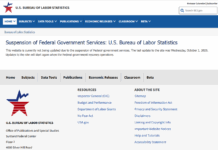Below are some thoughts on the implications of the Fed’s dovish surprise at yesterday’s FOMC meeting. The actual economic impact of the Fed’s decision not to taper its money printing campaign isn’t all that significant. What is significant and more meaningful is the signal the Fed sent, and the implications that signal may have for future policy and investment strategy.
1.) The probability of a late-1990s style stock market bubble-and-bust just increased measurably. The U.S. stock market is already at one of its most richly valued levels in history. The Fed’s dovish posture at the latest FOMC meeting signals that the Bernanke Fed’s head-in-the-sand approach to asset bubbles still prevails.
2.) Hubris remains pervasive among the academic economists who dominate the Fed board. The Fed told the markets yesterday that it is concerned with tightening financial conditions (read rising interest rates). Why is the Fed concerned that interest rates are rising? Did the Fed not tell financial markets just months ago that the level of interest rates will depend on the economic outlook?
The problem that Dr. Bernanke and his erudite allies on the FOMC face is that they ostensibly believe that only they, a 12 member board of academics (who suffer no consequences when they are wrong), know what the appropriate level of interest rates should be. The other few hundred million informed investors who put money on the line each and every day and have a vested interest in getting economic growth and interest rates right must be mistaken. The arrogance is shocking. What’s more is that continued efforts to try to suppress long-term interest rates will fail if market participants believe economic growth justifies higher interest rates. The Fed will put its credibility into question if it continues to ignore the wisdom of markets.
3.) Dr. B. reaffirmed that his Federal Reserve is one of the most short-term oriented Fed’s in the history of central banking. The reasons the Fed cited for not making a marginal reduction in its money printing campaign were 1.) fiscal policy over the next month could be scary, 2.) they want to see more evidence of economic strength in coincident data that is often revised and is a poor predictor of future economic growth and 3.) that the monthly prints of measured inflation re-accelerate.
4.) Despite an emerging consensus among academic economists that quantitative easing is ineffective and may even harm economic welfare (something ordinary citizens recognized long ago), the Bernanke Fed moves forward with the Groucho Marx explanation of quantitative easing, “Who are you going to believe, me or your lying eyes?” Despite decades (centuries even) of evidence showing that a steep yield curve is expansionary, Dr. Bernanke insists that pushing down long-term rates and flattening the yield curve is a pro-growth policy.
5.) The Fed continues to stubbornly insist five years after the official start of the economic recovery, and despite glaringly evidence, that the high unemployment rate is cyclical. Can you still call high unemployment cyclical when it has persisted for more than five years?
6.) As the taper talk from earlier this year indicates, the Fed has created an unhealthy dependency on zero percent interest rates and perpetual money printing. When (if?) the Fed actually tightens policy, a recession and financial calamity are now a near certainty.
7.) The Fed’s focus on low core-inflation readings indicates that the central bank has a very narrow and limited view of inflation that may further destabilize the U.S. financial system. Just because the Fed’s zero percent interest rate policy and perpetual money printing campaign haven’t yet resulted in higher measured consumer goods inflation doesn’t mean that it is not creating inflation. The Fed can print money and increase liquidity, but it can’t control where that money goes. Prices of homes—a good that two-third of Americans buy—are up 12% over the last year. If instead of using, owners’ equivalent rent—a fictional measure of home price inflation—in the CPI, the Fed instead used actual home prices, it would recognize that inflation is running near 4.5%.



